Thus begins the quest for some homemade masa dough that will hopefully lead to mind-bending corn tortillas, tamales, and maybe even some pupusas.
We're taking some shortcuts here to prove that the process is accessible to anyone willing to give it a try, and so far the results are off the charts.
Homemade Masa Dough Recipe
First I want to mention that this method is new territory for me as well, so there might be some adjustments along the way. I'll update the posts as the process gets refined, so be sure to check back and re-read before starting a batch of your own.
For me, the Daniel Gritzer Serious Eats article on making masa using a food processor was the final impetus to get the dough rolling (worth a read). Masa dough is typically ground in a fine-grade industrial behemoth, but it's surprising how effective a standard food processor can be as long as you make a few tweaks to the process.
He also mentions a bag of organic corn that you can get on Amazon. And since dried field corn is surprisingly hard to come by this is what we're starting with. (Update: we recently made a batch using White Olotillo Corn and have also had success using plain ol' popcorn kernels.)
This is organic yellow field corn, and yes, that is 25 lbs. of corn, probably enough for more tortillas than you can eat over the next few years.
So how exactly does this transform into masa dough?
It's a good question and one that the ancient Meso-American cultures answered long before Chipotle colonized the process.
The nixtamalization process, in its simplest form, is treating corn with calcium hydroxide to make it more amenable to grinding. The outer skin of the kernel will partially dissolve and slip off after soaking in the calcium hydroxide. Beyond the reduction in labor, there's also an interesting health benefit in that the Cal increases not only the calcium content of the final product but also the niacin content.
Not to mention that nixtamalization creates that rich, authentic flavor that we tend to associate with traditional Latin cooking. So when asked in the quiz at the end of this post what the primary benefit of nixtamalization is...if your answer is "taste yum" then you are mostly there.
Okay, enough backstory...
Start by rinsing two cups of the dried corn in some cold water. Take a quick look for any stones or struggling kernels and discard them.
Add 1 tablespoon of the calcium hydroxide to 7-8 cups of water. You can get the calcium hydroxide at most Latin markets, and on Amazon you'll see it referred to as both Cal Mexicana and Pickling Lime.
Combine well with the water and then add the corn. (Note: it's best to use a non-reactive pot when using calcium hydroxide.)
Bring to a boil and then reduce heat to a simmer. Let simmer for 30 minutes or so, stirring occasionally. Make sure the corn is always submerged in liquid; you can always add more water if your pan calls for it.
When the outer skin of the kernels slip off easily then it's had enough cooking time.
You can also bite into the kernel. The outer portion will be slightly cooked but the inner portion remains dry and uncooked. Perfect!
Remove the pan from the heat, cover, and let it sit overnight at room temperature. This gives the calcium hydroxide time to do its job.
No one knows for sure exactly how long it needs, a minimum would probably be 6-8 hours. So yes, you could start it in the morning and use it for dinner if you wanted to, but I've just been letting it rest overnight, anywhere from 12-16 hours. After which it looks like this...
Drain the corn and then give it a good massage under some cold water.
Rub the corn between your hands to force the skins off the kernels. Most of them will slip off easily, but don't worry about getting rid of every last one. It's also worth replenishing the standing water a couple times until it starts to run clear.
And now the shortcut.
Instead of buying a fine-grade grinder, you can get by using a simple food processor. I'm using a smaller food processor so I'll grind it in two batches.
After starting with 2 cups of dried corn, you've now got about 4 cups of hydrated corn. So I'm adding 2 cups of the hydrated corn to a food processor along with 1/2 teaspoon of salt and 1/4 cup of water.
Give it a whirl. You might have to stop a few times to wipe down the sides.
And if it's not combining you can some additional water, 1-2 tablespoons at a time.
Eventually it will combine into a thick, dough-like substance. These batches took about 4-5 minutes each in the food processor and eventually turned into this blast from the past...
Look at the potential in that bowl! What do you see first? Tamales? Tortillas? The solution to all of life's problems?!!
The masa dough might be a little wet and that's okay, that comes with the territory of using a food processor to grind it.
And now I have both good news and bad news.
The good news is that I've already made a few batches of corn tortillas from this masa and they are delicioso. The bad news is that it would make this post way too long to include all the details here, so I'm going to do the corn tortillas in a separate post a few days from now (here it is). Here's what you'll end up with though if you've got corn tortillas on the brain...
Yowsa!
It's a simple process, but if the dough is too wet they are difficult to handle. Once you dry out the dough a bit then it's just a matter of flattening golfball sized rounds with a tortilla press or casserole dish...
...and cooking each side for 45-60 seconds.
And yes, after much experimenting (gorging), they can turn the simplest of tacos into something extraordinary.
But first things first...
Get some masa dough in the house! It will open up so many possibilities for your kitchen. Time to keep an eye out for some dried field corn 🙂
I'll put instructions in the recipe box below, but feel free to get in touch if you have any additional questions.
Buen Provecho.
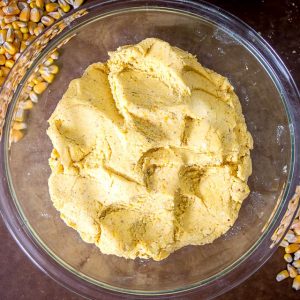
Homemade Masa Dough Using Yellow Field Corn
Ingredients
- 2 cups dried field corn
- 1 tablespoon calcium hydroxide
- 8 cups water
- 1 teaspoon salt
- 1/2 cup water (to grind the masa)
- 1/2 cup masa harina (optional)
Instructions
- Rinse 2 cups of dried field corn in cold water. Remove any stones or struggling kernels.
- Add 1 tablespoon of calcium hydroxide to 8 cups of water in a non-reactive pot (I used stainless steel). Combine well. Add the corn to this mixture.
- Bring to a boil and then reduce heat to a simmer. Cook for 30 minutes or so, stirring occasionally. When the skins of the kernels slip off easily then it's had enough cooking time.
- Remove from heat, cover, and let sit overnight at room temperature.
- The next day (or at least 6-8 hours later) drain the corn and massage it under running cold water. Use your hands to remove the skins from the kernels. Change the standing water a couple times until it starts to run clear.
- Drain the corn and add to a food processor. You'll need 1 teaspoon of salt and approximately 1/2 cup of water for the whole batch (as photographed above I ground it in two batches in a smaller food processor). Wipe down the sides of the food processor occasionally. It will need approximately 4-5 minutes to thoroughly combine, you can add splashes of water if it's not combining well.
- Use immediately or cover with plastic/foil and store it in the fridge.
- If you want to make tortillas with the masa dough, adding some masa harina to it will make it easier to handle. I added about 1/2 cup to this batch.
Notes
Disclaimer: Yes, there are affiliate links on this page. That means I get a small percentage of the sale if you decide to try out one of the linked products, at no additional cost to you. But my opinion is not for sale and I only recommend products that I actually use and trust. Email me if you have questions about this.
Still hungry?!
Want to receive Mexican Please recipes via email when they are posted? Sign up below to subscribe. All recipes are spam free.


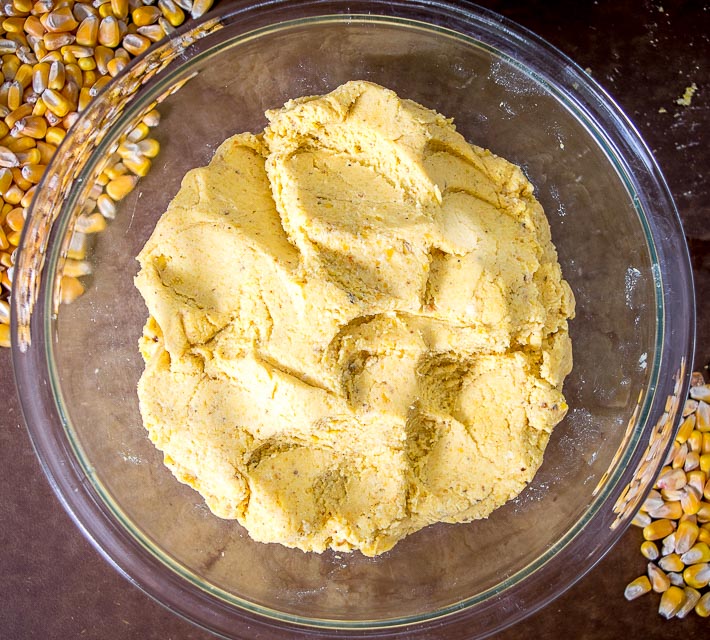
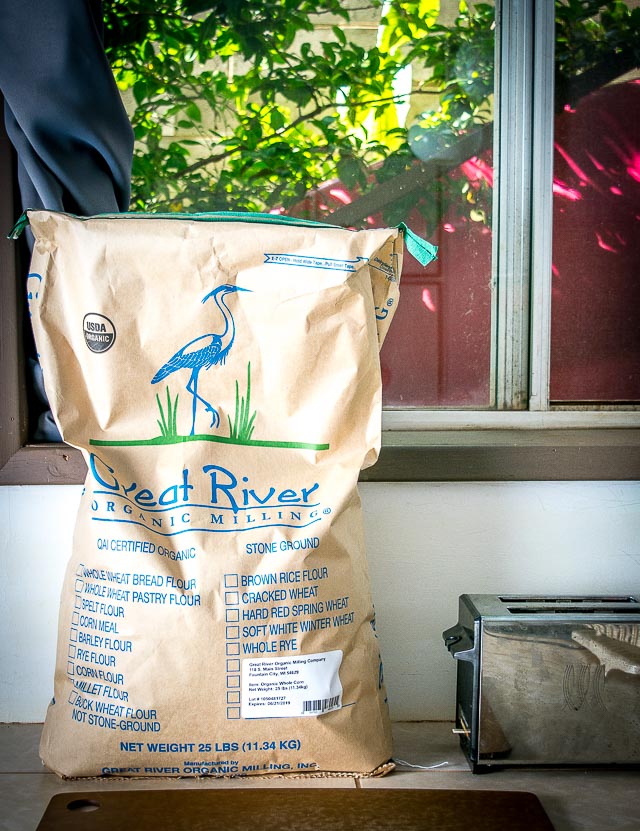
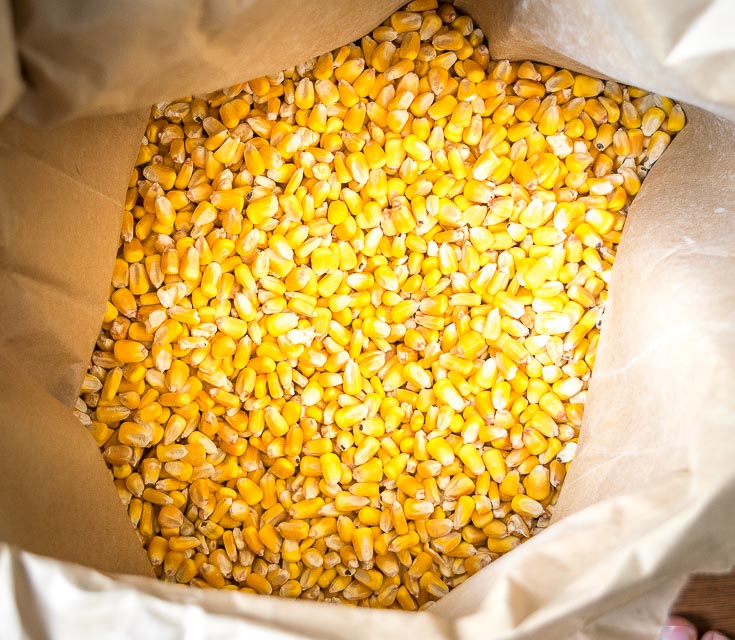
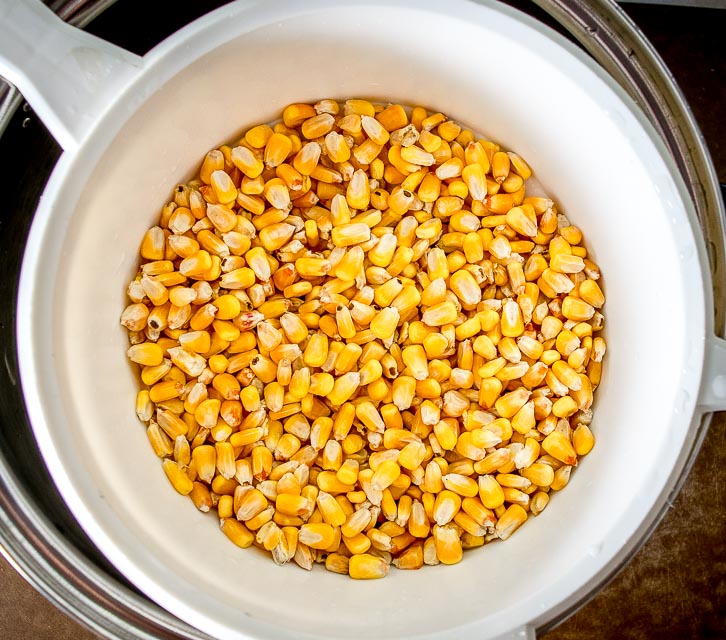
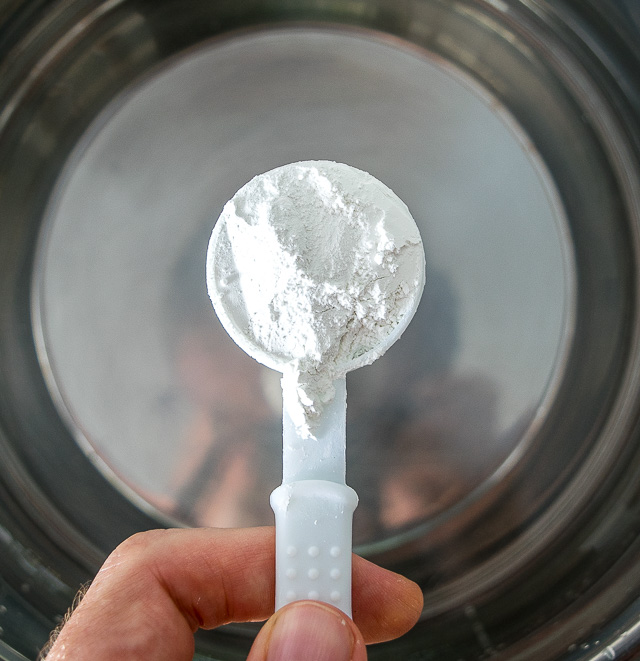
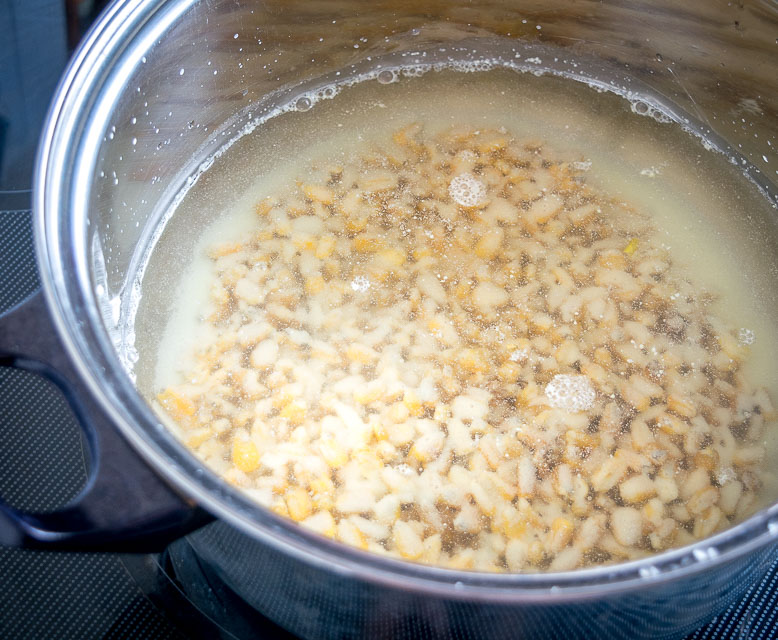
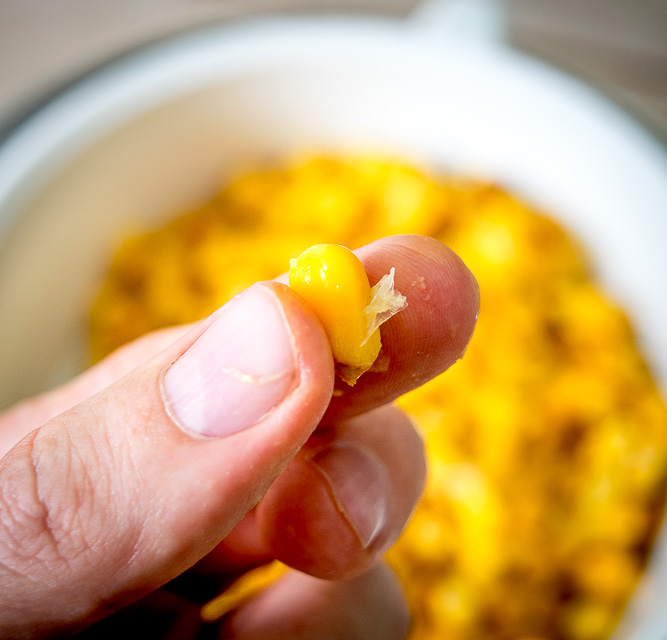
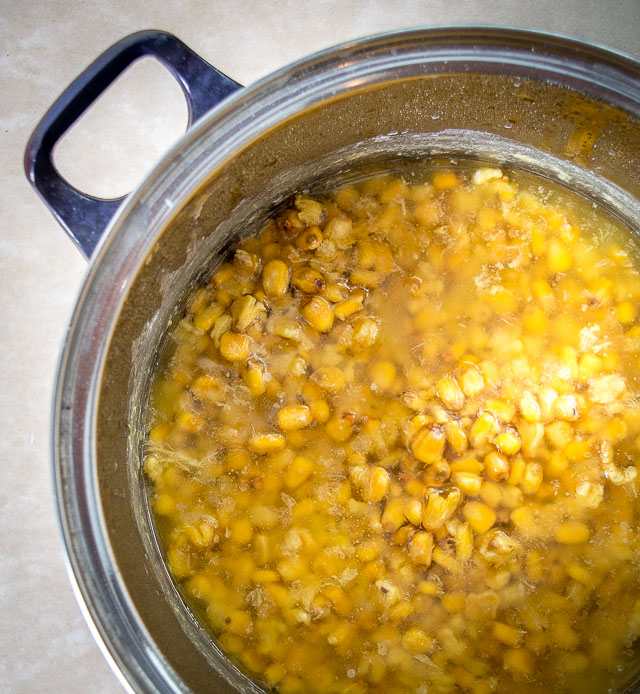
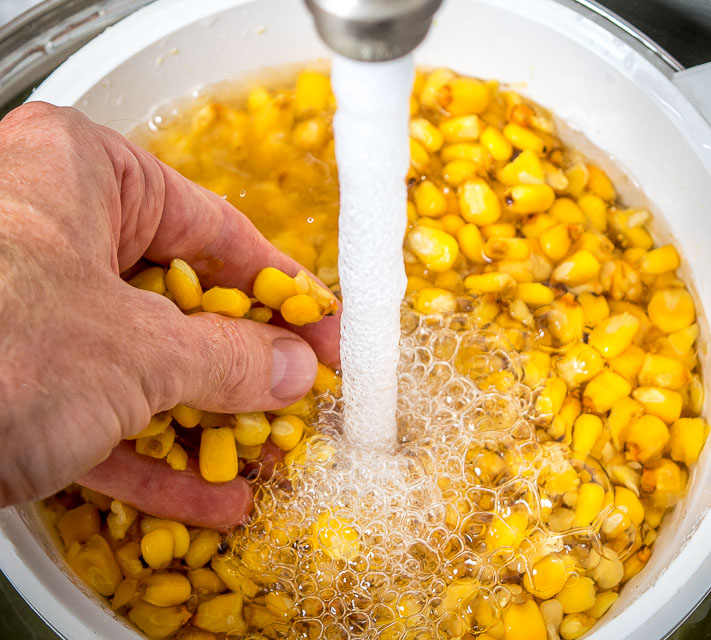
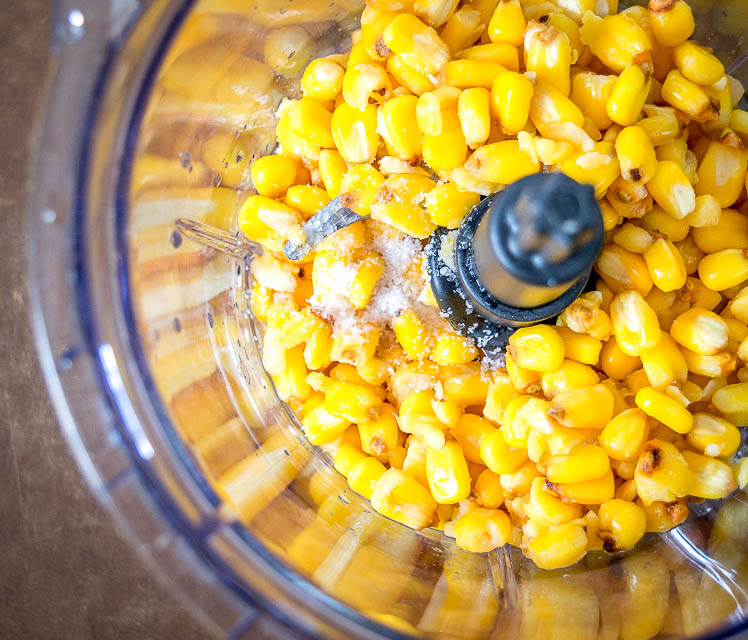
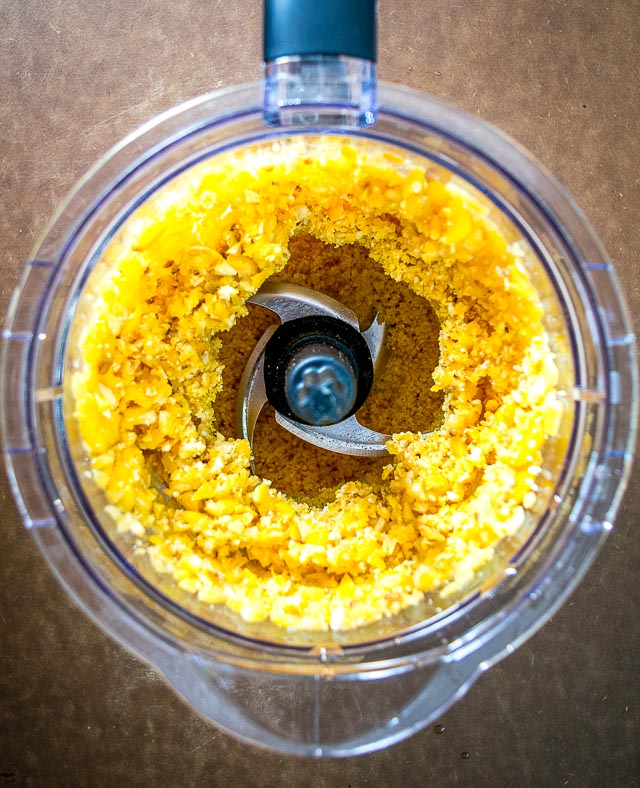
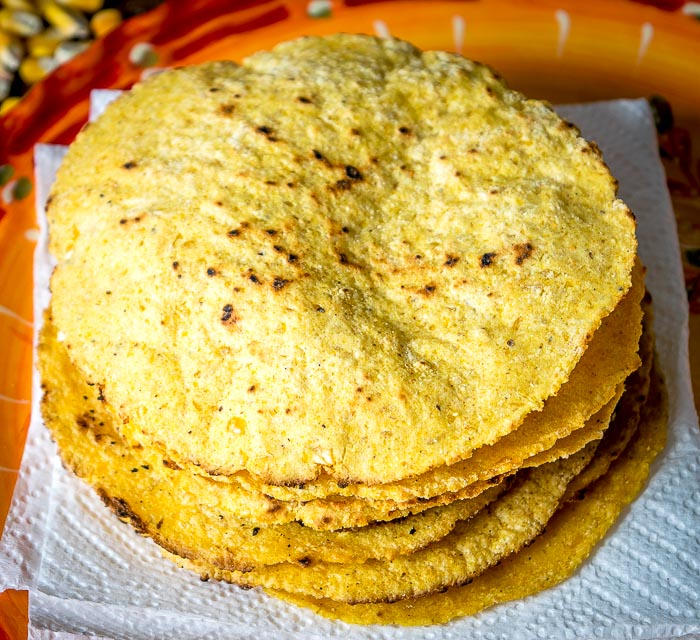
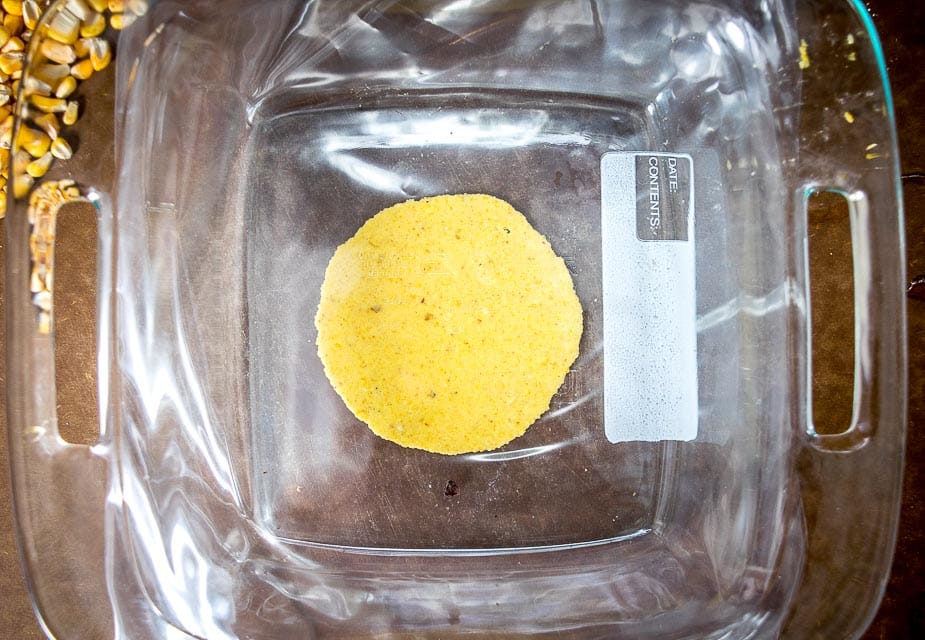
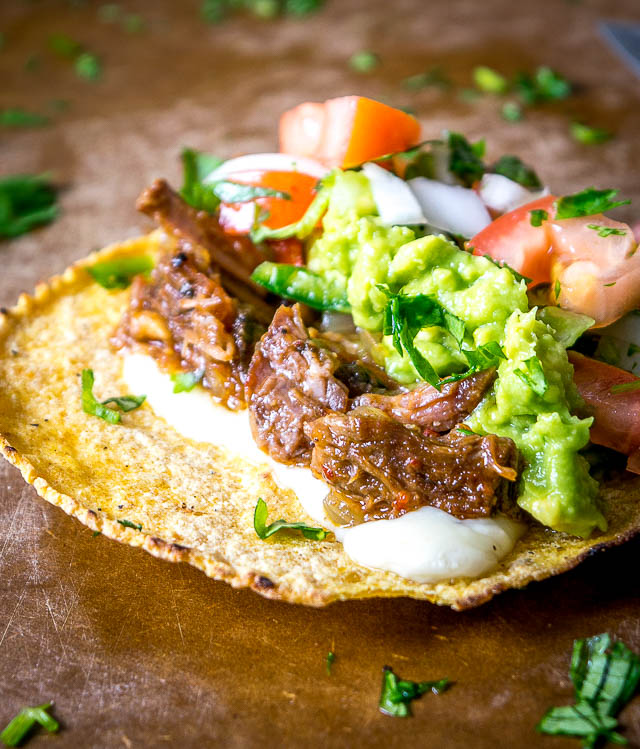
Agnes Curry
Hi Patrick, does the corn get bitter if left too long in the lime liquid? I'd started the process but then got sick so put the corn in the fridge. The skins never truly slipped off but the corn was soft and I ground it, but it tasted awful. Sadly, I'd used some lovely heirloom corn I'd grown...all wasted. Any advice would be most helpful!
Patrick
Hey Agnes! Hmmmm that's a good question, I have to admit I haven't tested that one and have never left it in the liquid any longer than overnight. But given that there's a chemical reaction taking place it does seem feasible that a dayslong swim could affect the flavor. Sorry to hear it was a wasted batch but thanks much for leaving your note as it is super helpful for other peeps to read. Cheers.
Diane Quesada
How do you prepare this corn for mass for tamales what do you add
Patrick
Hey Diane! I would just use the Tamales recipe as a starting point:
Easy Tamales Recipe
But keep in mind that it uses Masa Harina as a starting point so you won't need to add any stock. Just grab 3 cups of your masa dough and add the fats, baking powder, and salt (optional) and you should be good to go. Note that this will make around 10-12 tamales so feel free to double or triple for larger groups. Cheers.
Dallas
If you made too much masa--madness I know--how would you go about saving it?
Slowly dry it out in the oven and then grind it into masa harina to be used later? And if so, how long does that last?
Patrick
Hey Dallas! Hmmmm tough one as I don't really preserve fresh masa and haven't tried drying it out like that yet. I'll sometimes keep masa dough in the fridge for a few days and it seems to do fine when tightly wrapped. You could also consider storing some of the nixtamal before grinding as it seems like that might last a little longer than the actual dough. Cheers.
Ron
This process is so much fun. It makes me happy to eat tortillas from this process! We are living in Ecuador, and there is no corn masa here. I tried using just corn flour without the cal process, and it just wasn't right. I get tortillas that taste great using the dried yellow corn grown here. The only difficulty I have is that the tortillas are a bit fragile. They do not like to roll for enchiladas,so we tried making enchiladas by just folding them rather than rolling, and they seem to desintegrate during the baking process. Any suggestion of what I may need to do get them them to have some elasticity? There is no gluten so . . . ? Mix in a little wheat flour? I purchased some white corn today and will try mixing in some of it.
Patrick
Hey Ron thanks for your note, so glad to hear you are getting some good tortillas from this post!
A few months ago I experimented with adding different types of fat to homemade (masa harina) tortillas:
Corn Tortillas Made With Fat
I was mostly doing it for flavor purposes, but one of the side effects was that the dough seemed a bit more malleable. I never got around to trying those tortillas out for enchiladas, and I also haven't tried it with tortillas made from dried corn, but if I were in your shoes I would be tempted to add a bit of fat to your dough to see if that helps. FYI lard was the clear winner for me flavor-wise, so if available I would try that first.
Also don't forget to warm up your tortillas before rolling them:
How To Warm Up Tortillas
The microwave method seems to add moisture to the tortillas so I would be tempted to try that first with tortillas made from dried corn.
Okay I hope that helps a bit. Let me know how it goes!
Cheers.
Rosa
I really enjoyed the way you wrote these instructions. Easy to understand the process. Thank you, Rosa in Santa Barbara, CA.
Patrick
Thanks much for your feedback Rosa! Cheers.
Brian McCorkle
Hi. I have lots of Mrs. Wages pickling lime. It claims to be hydrated lime which I think is what I need. It is several years old. I just tried 2 cups of yellow dent corn, washed, boiled 8 cups of water with 1 tablespoon pickling lime. It made the corn slippery, but the skins wouldn't come off. I have a neighbor who farms several thousand acres and has plenty of yellow dent corn. I would really like to make this work. Should I use more lime? Any ideas would be appreciated.
Patrick
Hey Brian, there's a good chance you've done everything right but now just need to let it rest overnight at room temp. This will loosen up the skins even more and they'll slip off under running water tomorrow. Cheers.
Xen
Can i use baking soda instead of lime?
Patrick
Hi Xen! No, baking soda won't have the same effect as Calcium Hydroxide. Cheers.
Susan
Thank you very much for this recipe, I love things made from scratch.Do you have any idea if calcium carbonate would work for this? I have that in my pantry, and have some purple corn I would like to make tortillas from. What do you think?
Patrick
Hey Susan! I would not recommend trying this recipe with that as it is unlikely to have the same effect as Calcium Hydroxide. Cheers.
Alex Moncada
Hey Patrick!
I've read your story and find it impressive that you not only embraced the Yucatan Culture with such enthusiasm, but that you made it your mission to learn how to cook, scratch made authentic Mexican cuisine, which can be incredibly laborious!! I know this all too well, as I grew up with my mom and grandmother's cooking traditional Mexican cuisine everyday and all day.
I first came across your recipe after researching for an intriguing Colombian Chef's beef and potato empanada recipe, which uses corn masa dough made with popcorn kernals...how fascinating!! My mom came across it recently in the NYT and called me immediately to share the recipe.
I imagine that the field corn used in your masa recipe is somewhat similar to popcorn kernals, right? Anyways, thanks again for posting this recipe! I plan on making it this week.
Patrick
Hey Alex thanks much for your note! Yeah I've gotten a couple notes from people who have used popcorn kernels to make corn tortillas with success -- so you're right it's probably not that much different than traditional field corn. I haven't tried it myself but it's been on my list for awhile now so maybe it's time to give it a go. Thanks for the inspiration 🙂 Cheers.
Scott Knox
Curious about where the rinsed off skins end up? The corn is rinsed and the skins come off, but they end up in the masa? That part wasn't clear to me Patrick.
Patrick
Hey Scott! After rinsing you drain the corn and the skins go down the drain with the rinse water. Cheers.